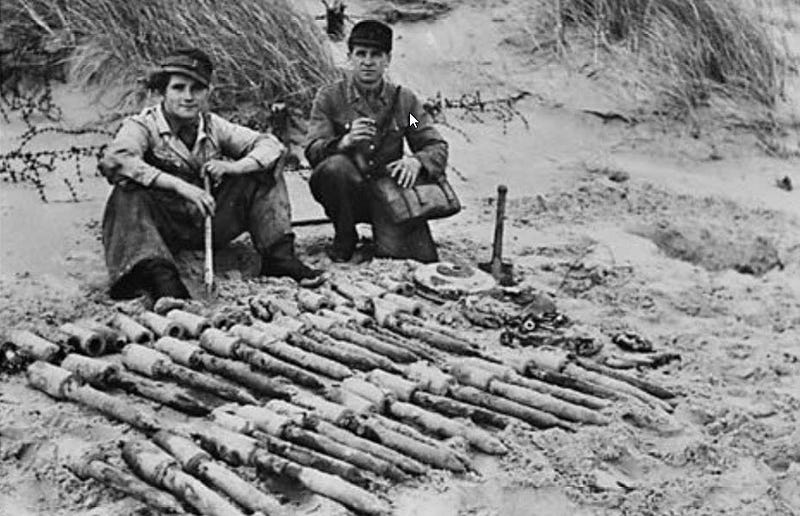The Untold Suffering of German POWs in Mine Clearance After WWII
Written on
Chapter 1 The Aftermath of War
In the wake of Hitler's death and the unconditional capitulation of German forces in 1945, a wave of retribution ensued. The suffering of German soldiers was not confined to Soviet captivity; other Allied nations also sought to make them pay.
Among the nations involved, the French, Danish, Norwegians, and Dutch compelled captured German soldiers to de-mine their territories. These POWs were tasked with clearing minefields using nothing but their hands.
This practice contravened the Geneva Conventions, which strictly prohibit the use of prisoners of war for hazardous labor. To sidestep potential legal repercussions, the Allies referred to these German soldiers as "surrendered enemy personnel," deliberately avoiding the term "prisoners of war." Article 32 of the 1929 Geneva Convention states: "It is forbidden to use prisoners of war at unhealthful or dangerous work." In total, over one million mines were cleared by German POWs in Denmark alone.

Chapter 1.1 The Challenge of Mine Clearance
During WWII, the German military deployed 1,401,946 mines along the Danish west coast to thwart Allied landings. Post-war, the Danish government faced a dilemma: they required demining efforts but lacked the necessary resources. Fortunately, they had access to hundreds of German POWs.
For weeks, these soldiers crawled along Danish beaches, dismantling mines with only their hands. The pressure to meet daily quotas forced them to work rapidly, leading to tragic mistakes. Many mines detonated, resulting in fatalities among the soldiers.
With a requirement to disarm eight mines each hour, fatigue inevitably took its toll, making it increasingly likely that critical errors would occur. In the summer of 1945, an average of 9,715 mines were cleared daily in Denmark.
